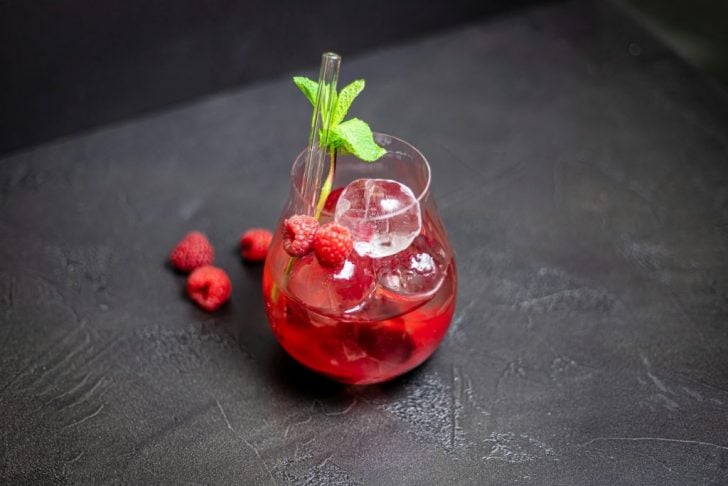
What is the Difference Between the Sparkling Wine Prosecco & Champagne? A Deeper Look

If you have ever wandered the wine aisle, you might have wondered, “Is Prosecco Champagne?” These two bubbly beverages often grace the same shelf space, yet they have distinct identities. Let’s pop the cork on five key differences between these sparkling stars and answer that lingering question: Is Prosecco Champagne?

Kate / Unsplash / In simple words, if the wine is coming from France, it is a Champagne. And if it is coming from Veneto, Italy, it is Prosecco.
The first – and perhaps most defining – the difference is where these wines are made. While Prosecco hails from the Veneto region of Italy, Champagne comes exclusively from the Champagne region of France. This geographic exclusivity is crucial, as it directly affects flavor, production methods, and labeling.
So, like a hometown recipe, the terroir imparts unique characteristics to each drink.
Traditional vs. Charmat Production Method
The second difference lies in how the bubbles find their way into your glass. Champagne employs the méthode traditionnelle (also known as the Champagne method), where secondary fermentation takes place in the bottle. This process is labor-intensive and time-consuming but delivers refined, delicate mousse and complex flavors.

Saloo / Pexels / While Prosecco is made out of the Charmat production method, Champagne follows the traditional méthode traditionnelle.
On the other hand, Prosecco relies on the Charmat method, where secondary fermentation occurs in large stainless steel tanks. This technique is faster and less expensive. Thus, this results in a lively, fruit-forward wine with coarser bubbles and a fresh, straightforward profile.
Grapes Used: Glera vs. Chardonnay and More
The grapes used in Prosecco and Champagne are another point of divergence. Prosecco’s primary grape is Glera, a versatile variety known for its fruity and floral notes. Sometimes other local grape varieties, like Verdiso and Perera, are blended in small amounts.
Champagne, by contrast, primarily uses Chardonnay, Pinot Noir, and Pinot Meunier grapes. Each variety contributes specific traits to the blend, yielding a wide range of styles from brut to rosé. Chardonnay brings crisp acidity, while Pinot Noir and Pinot Meunier add structure and richness.
Crisp vs. Complex Flavor Profiles
Prosecco’s flavor is typically lighter, with prominent notes of green apple, pear, citrus, and white flowers. It is often a touch sweeter and less acidic than Champagne, making it a friendly companion for casual sipping or cocktails.

Stefan / Unsplash / While Prosecco has a light flavor, Champagne has higher acidity and finer taste.
Champagne, due to its traditional production method, often exhibits a broader flavor spectrum. You will find hints of brioche, nuts, and a toasty character layered over fresh citrus and orchard fruit notes. Its higher acidity and finer bubbles lend it a crisp, elegant finish, perfect for savoring with oysters or caviar.
The Difference in Pricing
The difference in production methods has a notable impact on pricing. Prosecco is often more affordable, making it an accessible option for a casual weeknight or celebratory brunch. In contrast, Champagne’s meticulous crafting process typically commands higher prices.
Thus, it is often reserved for special occasions or gifts.
So, is Prosecco Champagne?
After exploring these differences, it is clear that the two are distinct despite sharing a common category. Is Prosecco Champagne? No! But it does not need to be. Each wine brings its unique charm to the table, whether it is Prosecco’s bright and lively demeanor or Champagne’s sophistication and depth.
So, next time you are choosing between the two, think of it less as a rivalry and more as an opportunity to appreciate the best of both worlds.
More in Luxury
-
`
Some Handy Tips to Help You Start Your Own Business in 2024
Embarking on the entrepreneurial journey in 2024? It is a thrilling expedition filled with opportunities to innovate and carve out your...
February 3, 2024 -
`
7 Small Lifestyle Tweaks That Will Instantly Give You An Edge
Imagine waking up every day feeling like a force of nature, ready to tackle any challenge with focused calm and unwavering...
January 24, 2024 -
`
Mark Hamill Finally Meets Star Wars Co-Star Natalie Portman After Two Decades!
On January 7, 2024, the 81st Golden Globes witnessed an event that was nothing short of cinematic history coming to life....
January 20, 2024 -
`
Emily Atack and Scientist Boyfriend Dr. Alistair Garner’s Path to Parenthood!
In a delightful twist of fate, “The Inbetweeners” actress Emily Atack has recently shared a heartwarming surprise with her fans –...
January 9, 2024 -
`
Revolutionizing Footwear: A Green Stride Towards Sustainability
In the bustling world of fashion, where trends change in the blink of an eye, our beloved sneakers have emerged as...
January 1, 2024 -
`
The $11.3 Trillion Wealth Crash That Happened in 2022
In 2022, the world witnessed a surprising twist in the tale of wealth – a drop of $11.3 trillion, the first...
December 21, 2023 -
`
Question Time: Why Americans Are So Poor in a Country So Rich
In a nation celebrated for its colossal wealth and technological advancements, the persistence of poverty presents a paradox. The United States,...
December 18, 2023 -
`
Manhattan’s Playground for Millionaires: Core Club’s $100k Membership Unveiled
Are you ready to step into the opulent world of Manhattan’s latest sensation? Core Club, the epitome of luxury and exclusivity,...
December 14, 2023 -
`
Dwayne ‘The Rock’ Johnson’s Business Ventures
When you think of Dwayne ‘The Rock’ Johnson, the first thing that may come to mind is his impressive career in...
December 5, 2023














You must be logged in to post a comment Login